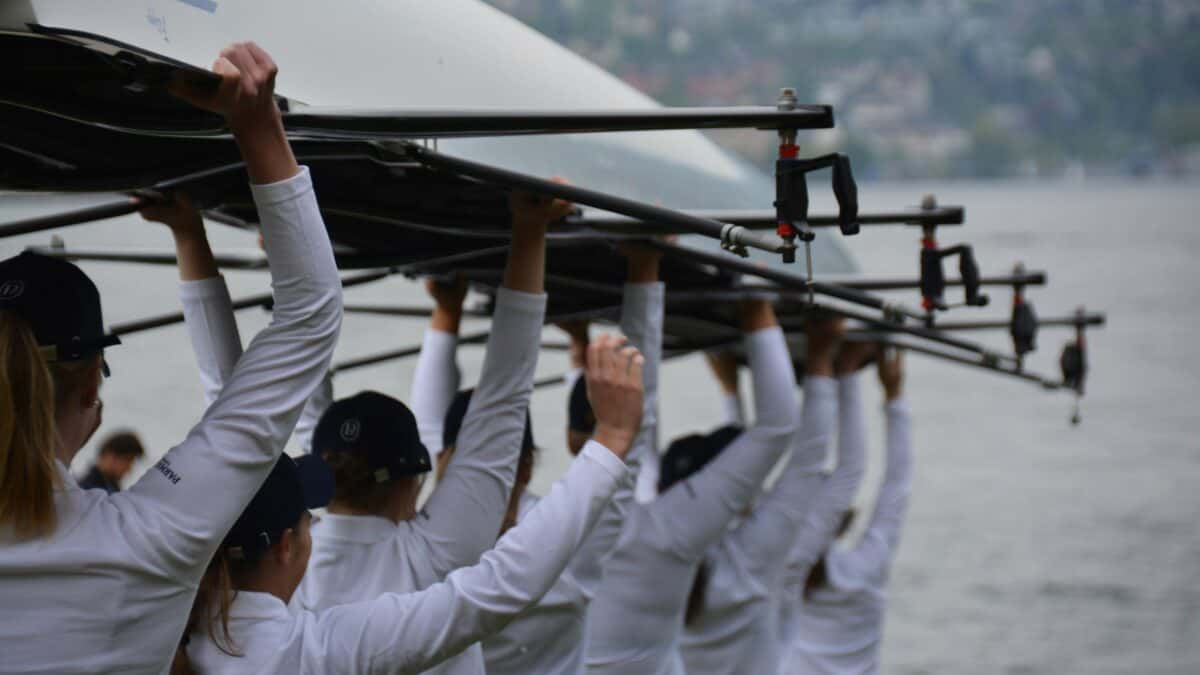
08 Jun 2016
Greater than its parts: Cornell University
Of the eight ‘Ivy League’ schools, seven pre-date the modern sport of rowing—and the American War of Independence for that matter. The youngest member, Cornell University, was founded in 1865 in Ithaca, New York and 2015 marks their sesquicentennial celebration of 150 years which includes a rich history in rowing.
Cornell came along in an era where the rowing craze was already sweeping across much older campuses such as Harvard University and Yale University, who celebrated the 150th edition of their famous Boat Race in 2015.
From informal beginnings with local rowing clubs, Cornell’s team took shape in the early 1870s and quickly found a place among its peers.
A university’s motto is often looked to as a source of inspiration and encouragement to coaches and students. Cornell is no exception. What is unique is that Cornell’s motto is not in Latin or Greek, but a statement by the school’s founder, Ezra Cornell, who said, “I would found an institution where any person could find instruction in any study.”
“This idea has had a direct impact on the type of student-athlete we have here at Cornell,” says women’s rowing coach, Liz Dennison. “The coaches and student-athletes at Cornell are committed to seeing success in the classroom and on the water.”
Cornell’s success over the years is firmly rooted in its history and the current team takes inspiration from legendary coaches like Charles “Pop” Courtney and R. Harrison “Stork” Stanford, considered the fathers of Cornell Rowing’s success. Courtney came to the helm of the team in 1889 after six years as assistant and led the “Big Red” team to 14 Intercollegiate Rowing Association (IRA) championships during his time.
Courtney was also not afraid to challenge the social standards of the day and encouraged women’s participation in the sport. “Courtney was far ahead of his time with respect to women’s sports,” says Dennison, “training women to row through intramural sports during his tenure.” It would not be, until 1975, however, that women’s rowing would become a fully recognised ‘Varsity’ sport at Cornell.
After Courtney’s retirement, Coach Stanford guided the team for 34 years from 1937 and added six more IRA championships to the school’s record. One famous crew was that of 1956-1957. In 1956, this Cornell crew narrowly lost the chance to represent the United States at the Melbourne 1956 Olympics in Australia.
The next year Cornell (or the Big Red) went undefeated, triumphing both at home and ‘across the pond’ at the Henley Royal Regatta in Great Britain. They set course records at many of the races they attended. A successful trip to the World Rowing Cup in Lucerne, Switzerland after winning the Grand Challenge Cup at Henley cemented the great achievements of this crew, who were hailed as “Champions of the World” by the campus paper, the Cornell Daily.
Today, Cornell boasts a state-of-the-art rowing facility. The 55-year-old John Collyer, Class of 1917 Boathouse underwent an USD$8 million restoration and was rededicated in 2011 as the John Collyer, Class of 1917 and Doris B. Robison Boathouse.
“The culture and feel of the boathouse at Cornell,” says Dennison, “builds from traditions started by Charles Courtney.”
Despite the division of the team into three programmes for women, heavyweight men, and lightweight men, there is a strong sense of unity within Cornell Rowing.
“All three programmes train at the same time, row out of the same boathouse and share all of the same on campus facilitates,” says Dennison. “The bond and support between that athletes is immediately apparent to anyone who visits and sees the team in action. The way and amount in which all three programmes work together makes Cornell a special place and each individual programme stronger; the sum of the whole is truly greater than its parts.”

